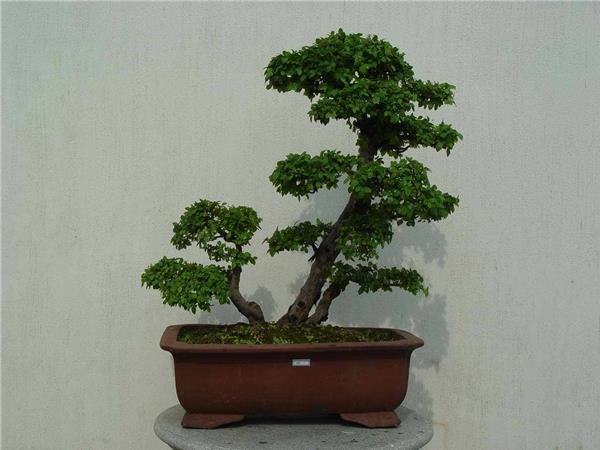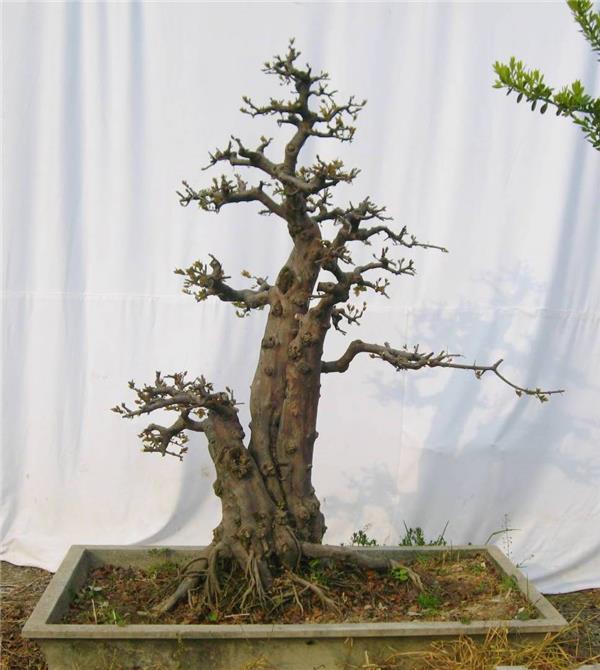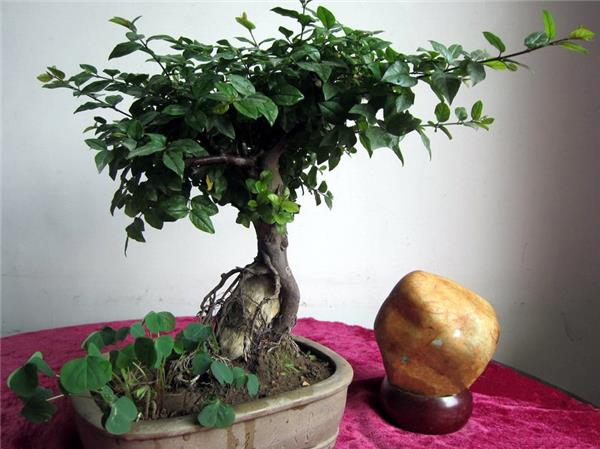How to make bonsai pile selection and maintenance of Finch Plum Bonsai
Sparrow plum is a kind of bonsai modeling material selection with a long history, the maintenance of sparrow plum generally only need to pay attention to some daily matters such as watering, fertilization, temperature and other issues, can ensure its ornamental value.

How does the old pile of sparrow plum look?
1. First of all, the thicker branches are sawed off. Generally speaking, if you do it alone, you should keep the parts of bending, bending and bending; if it is double-dry or multi-dry, you should pay attention to the change of height, straight and oblique contrast, size and density, far and near changes and echoes between the left and right, and so on, so as not to be monotonous, rigid and rich in variety. After sawing and trimming, the stump has to be further carefully processed and reshaped to make it more perfect. Pruning and binding are the main means of modeling processing, the two methods can be used at the same time, if necessary, the original branches can be adjusted to make it in line with the balance of composition.
two。 When fastening a piece, two branches with the same size and shape on a tree stump coexist, and the left and right sides are symmetrical. The branches under the stump are larger than the ones above. In addition, there should be a responsive relationship between branches and branches. Each piece should be in natural shape. The bending of the branch, usually with lead wire and brown rope, makes it bend into an unplanned "s" shape. After bending, the branch still has its natural growth potential and natural branch shape beauty.

Maintenance methods of sparrow plum bonsai
Watering: Finch plum likes a humid climate, requiring the relative air temperature of the growing environment to be 70-80%. If the air relative humidity is too low, the lower leaves of Finch plum will yellowing and fall off, while the upper leaves will be dull. Potted Finch plum should always keep the basin soil moist, especially when it is hot in midsummer and the weather is dry, we should pay attention to watering and spraying water frequently to prevent the basin soil from drying.
Fertilization: sparrow plum pile scene during the growth period, in addition to the rainy season, should often apply thin cake fertilizer water or manure fertilizer water, so that branches and leaves green and bright, vigorous growth.
Temperature: because Finch plum is native to the tropics and likes the environment of high temperature and high humidity, it has strict requirements on winter temperature. It stops growing when the ambient temperature is below 10 ℃ and cannot safely survive the winter when frost occurs.
Lighting: sparrow plum likes semi-shaded environment. It needs plenty of sunshine in autumn, winter and spring, and shade more than 50% in summer. Indoor maintenance of Finch plum, as far as possible in bright places, such as well-lit living room, bedroom, study and other places. After indoor maintenance for a period of time, it should be moved to an outdoor shaded place for maintenance for a period of time, so that alternating exchange can grow well.

Pruning: sparrow plum is very resistant to pruning, which can be pruned once a year after autumn to remove some overdense branches and cut off all kinds of messy branches or long branches, so as to maintain a certain styling posture and promote its branches and leaves to flourish. Finch plum has a strong sprouting power, so it should be carried out in time to make axillary buds sprout lateral branches. the more times of heart-picking, the denser the branches and leaves.
Turn the basin: once every 2-3 years, the time should be before sprouting in February-March in spring. Combined with turning the basin, the root was raised step by step. Replace the consolidated old soil above 1B2 and fill the bottom of the basin with base fertilizer.
Pest control: pest control is mainly harmful to sparrow plum, longicorn beetles harm cadres, can be coated with stone sulfur mixture, shell insects absorb tree sap, can be manually brushed to kill it.

In addition, it should be noted that the excavation of the old pile of Finch plum should be carried out before sprouting from February to March in spring. When digging and obtaining, we should also be careful to avoid harming its roots and causing the plant to die prematurely, which is also the basis to ensure its healthy growth.
- Prev

Matters needing attention in planting and maintenance of Cornus officinalis and control of diseases and insect pests
Matters needing attention in planting and maintenance of Cornus officinalis and control of diseases and insect pests
- Next

[Zhu Dinghong] Culture method and picture appreciation of Zhu Dinghong
[Zhu Dinghong] Culture method and picture appreciation of Zhu Dinghong
Related
- Wuhan Hospital Iron Tree Blooming Result Was Instantly Frightened by the Gardener Master
- Which variety of camellia is the most fragrant and best? Which one do you like best?
- What is the small blue coat, the breeding methods and matters needing attention of the succulent plant
- Dormancy time and maintenance management of succulent plants during dormancy
- Minas succulent how to raise, Minas succulent plant pictures
- What are the varieties of winter succulent plants
- How to raise succulent plants in twelve rolls? let's take a look at some experience of breeding twelve rolls.
- Attention should be paid to water control for succulent plants during dormant period (winter and summer)
- Watering experience of twelve rolls of succulent plants
- Techniques for fertilizing succulent plants. An article will let you know how to fertilize succulent plants.

